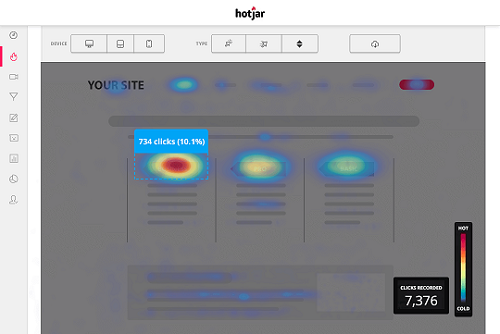The Origins Of Emojis in 1862 And It's Importance During Pandemic in 2020
Nobody thinks twice about using emojis nowadays. In fact, if someone sends a message and it’s completely emoji-less, you’re likely to wonder if there’s something wrong with them. But as common and popular as emojis are, have you ever stopped to think about where they come from, and how they became such a well-used form of communication? We’ve done the research for you - sit back and enjoy a brief history of emoji.
The Origins Of Emoji
Let’s head right back to 1862 when the emoji was accidentally invented by a printer of The New York Times. When transcribing a speech given by President Abraham Lincoln, the printer inserted a :) - the smiley-face emoji that’s so common today - and the image must have proved surprisingly popular. Or that’s what we’d assume, as, by 1881, emojis were intentionally used for the first time in Puck, an American satirical magazine.
The Modern Emoji
For 100 years, all things emoji dried up, and it wasn’t until 1982 that Scott Falman, one of the earliest computer scientists, suggested that “joke markers” could be used on his university’s online bulletin boards to reduce misunderstandings. Finally, the emoji had made it onto our computer screens, but it still had a long way to go yet.
By 1997, AOL’s Instant Messenger became the first online communications platform to use the emoji in the form of “Buddy Icons” - simple images that users could share to convey their feelings or imply an action.
Just two years later, in 1999, Japanese artist Shigetaka Kurita created the first set of more than 170 emojis, which he used to convey information on the mobile platform he worked for in 1999.
Emojis Today
When Microsoft introduced their own range of 30 emojis on MSN Messenger in 2003, it was clear that the only way was up for these popular symbols. Google followed suit four years later, partnering with KDDI AU to incorporate emoji into Gmail. Then a year later, in 2008, Apple introduced emojis to its users in Japan, with an option for users in other countries to access the emojis through App Store apps.
Apple became the first company to introduce an emoji keyboard to all iOS users in 2011, rather than having users access emojis through an app.
2015 became a much-needed time for a change in the emoji world, with the introduction of skin-tone modifiers. It was now possible for users to modify their human emojis to 5 different skin tones. Then, in 2016, a “person with a headscarf” emoji was released, in a move to make the emoji more representative of society.
Emojis have come a long way since their humble (and accidental) beginning, and have been included in dictionaries, featured as the “word of the day”, and even made into a film - remember the Emoji Movie?
By 2020, the majority of us correspond using emojis on a daily basis. Who knows what might happen to the emoji in the future and whether it can possibly evolve any more than it already has.
Emojis During the Covid-19 Pandemic
Emojis nowadays have become even a new language, a phenomenon that is researched by scientists, a way to study the way people fill at a specific time in history, teenagers and adults can write complete sentence only using emojis as shown here...
Emojipedia, which tracks emoji trends on Twitter TWTR,

But Emojipedia’s analysis of emoji usage can create statistics about the sentiment of population, of an entire country or the world, for example, as the novel coronavirus began spreading across the globe earlier this spring has uncovered some other interesting trends.
The “folded hands” icon, which is also known as “prayer hands” and is used to convey “please” and “thank you,” was used 25% more this past April than it was last August, the last time its usage was measured, according to an Emojipedia analysis of emoji use in the "new normal.”
Emojipedia suggested that the spike in “prayer hands” could be related to “our current circumstances,” and cautioned that “it’s not a high-five.” The symbol showing two hands pressed palm to palm is also among the top 13 emoji used on Twitter in April.
Izaak Crook
 Reviewed by Mili Ponce
on
Thursday, October 22, 2020
Rating:
Reviewed by Mili Ponce
on
Thursday, October 22, 2020
Rating:
















 Entrepreneur, international speaker on Social Media Marketing. First one in the UK to write and speak in conferences about Twitter as a marketing tool. Consultant to Corporate Companies, Government Organizations, Marketing Managers and Business Owners.
Entrepreneur, international speaker on Social Media Marketing. First one in the UK to write and speak in conferences about Twitter as a marketing tool. Consultant to Corporate Companies, Government Organizations, Marketing Managers and Business Owners. Aspiring novelist with a passion for fantasy and crime thrillers. He hopes to one day drop that 'aspiring' prefix. He started as a writer and soon after he was made Executive Editor and Manager of the team at Social Songbird. A position he held for 5 years.
Aspiring novelist with a passion for fantasy and crime thrillers. He hopes to one day drop that 'aspiring' prefix. He started as a writer and soon after he was made Executive Editor and Manager of the team at Social Songbird. A position he held for 5 years. Musician, audio technician, professional tutor and a Cambridge university English student. Interested in writing, politics and obsessed with reading.
Musician, audio technician, professional tutor and a Cambridge university English student. Interested in writing, politics and obsessed with reading. Recently graduated with a BA in English Literature from the University of Exeter, and he is about to study an MA in Journalism at the University of Sheffield. He is an aspiring journalist and novelist; in his free time he enjoys playing chess, listening to music and taking long walks through nature.
Recently graduated with a BA in English Literature from the University of Exeter, and he is about to study an MA in Journalism at the University of Sheffield. He is an aspiring journalist and novelist; in his free time he enjoys playing chess, listening to music and taking long walks through nature. Lucy is an undergraduate BSc Politics and International Relations student at the London School of Economics and Political Science.
Lucy is an undergraduate BSc Politics and International Relations student at the London School of Economics and Political Science. Anna Coopey is a 4th year UG student in Classics at the University of St Andrews in Scotland. She is a keen writer and researcher on a number of topics, varying from Modern Greek literature to revolutionary theory.
Anna Coopey is a 4th year UG student in Classics at the University of St Andrews in Scotland. She is a keen writer and researcher on a number of topics, varying from Modern Greek literature to revolutionary theory.
